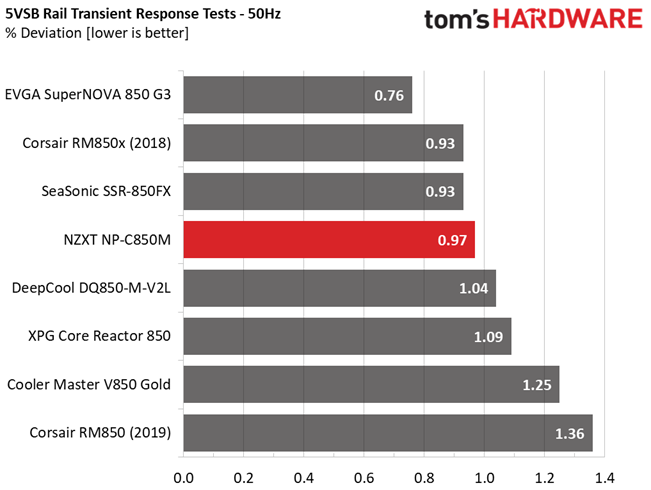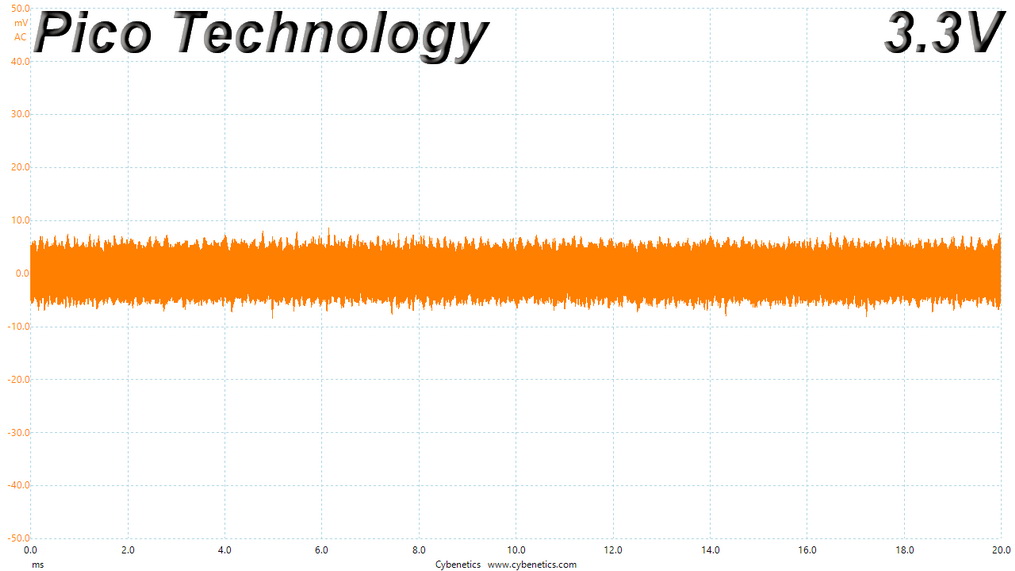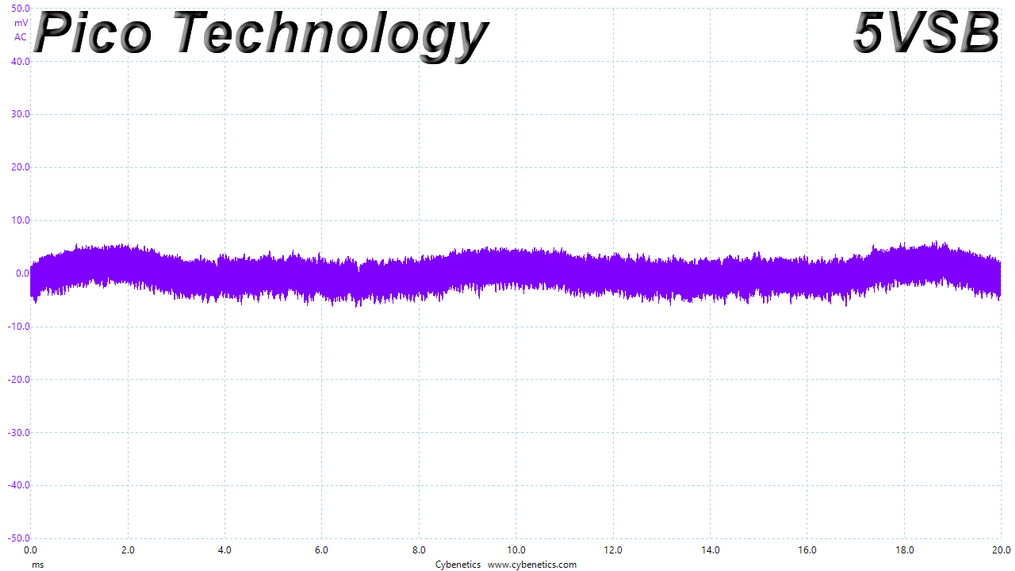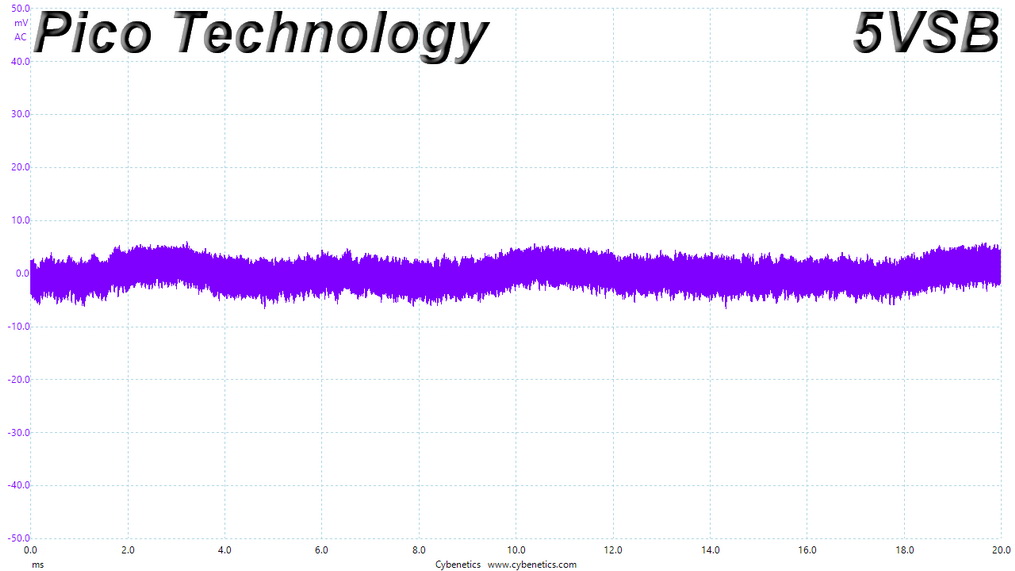Why you can trust Tom's Hardware
Advanced Transient Response Tests
For details about our transient response testing, please click here.
In the real world, power supplies are always working with loads that change. It's of immense importance, then, for the PSU to keep its rails within the ATX specification's defined ranges. The smaller the deviations, the more stable your PC will be with less stress applied to its components.
We should note that the ATX spec requires capacitive loading during the transient rests, but in our methodology, we also choose to apply a worst case scenario with no additional capacitance on the rails.
Advanced Transient Response at 20% – 20ms
| Voltage | Before | After | Change | Pass/Fail |
|---|---|---|---|---|
| 12V | 12.027V | 11.868V | 1.32% | Pass |
| 5V | 5.044V | 4.929V | 2.28% | Pass |
| 3.3V | 3.324V | 3.175V | 4.48% | Pass |
| 5VSB | 5.071V | 5.021V | 0.99% | Pass |
Advanced Transient Response at 20% – 10ms
| Voltage | Before | After | Change | Pass/Fail |
|---|---|---|---|---|
| 12V | 12.028V | 11.879V | 1.24% | Pass |
| 5V | 5.042V | 4.929V | 2.24% | Pass |
| 3.3V | 3.324V | 3.174V | 4.51% | Pass |
| 5VSB | 5.071V | 5.037V | 0.67% | Pass |
Advanced Transient Response at 20% – 1ms
| Voltage | Before | After | Change | Pass/Fail |
|---|---|---|---|---|
| 12V | 12.028V | 11.895V | 1.11% | Pass |
| 5V | 5.041V | 4.926V | 2.28% | Pass |
| 3.3V | 3.324V | 3.173V | 4.54% | Pass |
| 5VSB | 5.070V | 5.034V | 0.71% | Pass |
Advanced Transient Response at 50% – 20ms
| Voltage | Before | After | Change | Pass/Fail |
|---|---|---|---|---|
| 12V | 12.012V | 11.920V | 0.77% | Pass |
| 5V | 5.037V | 4.921V | 2.30% | Pass |
| 3.3V | 3.319V | 3.163V | 4.70% | Pass |
| 5VSB | 5.039V | 4.991V | 0.95% | Pass |
Advanced Transient Response at 50% – 10ms
| Voltage | Before | After | Change | Pass/Fail |
|---|---|---|---|---|
| 12V | 12.012V | 11.918V | 0.78% | Pass |
| 5V | 5.036V | 4.920V | 2.30% | Pass |
| 3.3V | 3.319V | 3.163V | 4.70% | Pass |
| 5VSB | 5.039V | 4.983V | 1.11% | Pass |
Advanced Transient Response at 50% – 1ms
| Voltage | Before | After | Change | Pass/Fail |
|---|---|---|---|---|
| 12V | 12.012V | 11.916V | 0.80% | Pass |
| 5V | 5.035V | 4.914V | 2.40% | Pass |
| 3.3V | 3.318V | 3.160V | 4.76% | Pass |
| 5VSB | 5.039V | 4.999V | 0.79% | Pass |

Results 25-29: Transient Response







The +12V rail performs quite well, and the same goes for the 5V and 5VSB rails. On the other hand, the 3.3V rail registers high voltage drops. In all tests, its voltage level falls below 3.2V. Thankfully, this rail is not loaded significantly in real-life conditions. Still, it should be able to keep its voltage above 3.2V in our tests.
Turn-On Transient Tests
In the next set of tests, we measure the PSU's response in simpler transient load scenarios—during its power-on phase. Ideally, we don't want to see any voltage overshoots or spikes since those put a lot of stress on the DC-DC converters of installed components.

Turn-On Transient Response Scope Shots


Typically for the Seasonic Focus Plus platform, there are no spikes at 5VSB, and the +12V rail takes some time before it settles down to its nominal voltage.
Power Supply Timing Tests
There are several signals generated by the power supply, which need to be within specified, by the ATX spec, ranges. If they are not, there can be compatibility issues with other system parts, especially mainboards. From year 2020, the PSU's Power-on time (T1) has to be lower than 150ms and the PWR_OK delay (T3) from 100 to 150ms, to be compatible with the Alternative Sleep Mode.
Get Tom's Hardware's best news and in-depth reviews, straight to your inbox.
| T1 (Power-on time) & T3 (PWR_OK delay) | ||
|---|---|---|
| Load | T1 | T3 |
| 20% | 92ms | 325ms |
| 100% | 84ms | 324ms |
The PWR_OK delay is out of the 100-150ms region, so the PSU does not support the alternative sleep mode (ASM). This is an older design that didn't take into account ASM. Its successor will most likely support it.
Ripple Measurements
Ripple represent the AC fluctuations (periodic) and noise (random) found in the PSU's DC rails. This phenomenon significantly decreases the capacitors' lifespan because it causes them to run hotter. A 10-degree Celsius increase can cut into a cap's useful life by 50%. Ripple also plays an important role in overall system stability, especially when overclocking is involved.
The ripple limits, according to the ATX specification, are 120mV (+12V) and 50mV (5V, 3.3V, and 5VSB).
| Test | 12V | 5V | 3.3V | 5VSB | Pass/Fail |
| 10% Load | 10.1 mV | 10.0 mV | 10.8 mV | 8.2 mV | Pass |
| 20% Load | 13.8 mV | 10.8 mV | 11.2 mV | 8.6 mV | Pass |
| 30% Load | 16.4 mV | 11.5 mV | 12.1 mV | 9.1 mV | Pass |
| 40% Load | 10.9 mV | 12.5 mV | 12.6 mV | 9.5 mV | Pass |
| 50% Load | 10.7 mV | 14.1 mV | 14.2 mV | 9.4 mV | Pass |
| 60% Load | 11.2 mV | 14.6 mV | 14.9 mV | 9.8 mV | Pass |
| 70% Load | 11.9 mV | 15.5 mV | 15.5 mV | 10.3 mV | Pass |
| 80% Load | 11.6 mV | 14.7 mV | 15.3 mV | 10.9 mV | Pass |
| 90% Load | 13.4 mV | 16.7 mV | 16.3 mV | 13.3 mV | Pass |
| 100% Load | 17.3 mV | 18.5 mV | 18.6 mV | 13.4 mV | Pass |
| 110% Load | 18.5 mV | 19.2 mV | 17.8 mV | 13.7 mV | Pass |
| Crossload 1 | 13.3 mV | 17.8 mV | 15.1 mV | 10.6 mV | Pass |
| Crossload 2 | 17.3 mV | 14.1 mV | 13.9 mV | 11.7 mV | Pass |

Results 30-33: Ripple Suppression



Ripple suppression is excellent on all rails, especially at +12V which is the most important.
Ripple At Full Load

Ripple Full Load Scope Shots



Ripple At 110% Load

Ripple 110% Load Scope Shots



Ripple At Cross-Load 1

Ripple CL1 Load Scope Shots



Ripple At Cross-Load 2

Ripple CL2 Load Scope Shots



EMC Pre-Compliance Testing – Average & Quasi-Peak EMI Detector Results
Electromagnetic Compatibility (EMC) is the ability of a device to operate properly in its environment without disrupting the proper operation of other nearby devices.
Electromagnetic Interference (EMI) stands for the electromagnetic energy a device emits, and it can cause problems in other nearby devices if too high. For example, it can be the cause of increased static noise in your headphones or/and speakers.
This is the first Pre-Compliance measurement that we perform using our brand new Rigol RSA3015E-TG. It was high time to replace our old, but super-reliable, Rigol DSA815-TG. Five spurs exceed the corresponding limits in the 338-683 kHz range with the average detector. In QP mode, two spurs are close to the limit, but they don't exceed it.
MORE: Best Power Supplies
MORE: How We Test Power Supplies
MORE: All Power Supply Content
Current page: Transient Response Tests, Timing Tests, Ripple Measurements and EMC Pre-Compliance Testing
Prev Page Protection Features, DC Power Sequencing, Cross-Load Tests and Infrared Images Next Page Performance, Noise and Efficiency
Aris Mpitziopoulos is a contributing editor at Tom's Hardware, covering PSUs.
